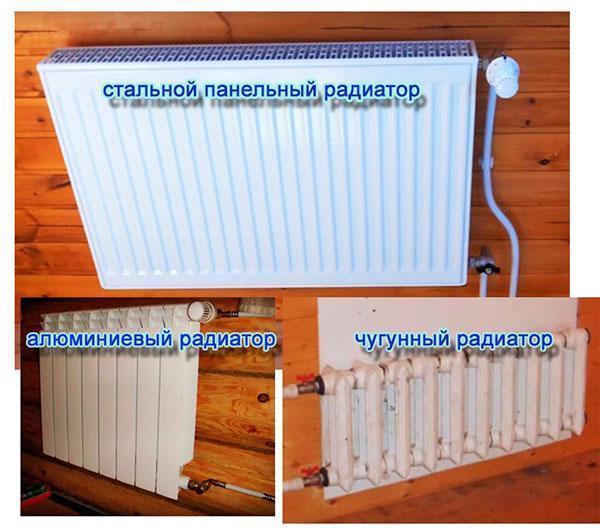How to choose the right radiators for heating
 For those who want to conduct heating in a private house or cottage, any radiator can be used. The choice should be based on aesthetic preferences only. For residents of high-rise buildings, the operating pressure in the heating system is of decisive importance when choosing radiators.
For those who want to conduct heating in a private house or cottage, any radiator can be used. The choice should be based on aesthetic preferences only. For residents of high-rise buildings, the operating pressure in the heating system is of decisive importance when choosing radiators.
Radiators are:
- sectional: cast iron, bimetallic, aluminum;
- monolithic steel panel radiators.
Each of the types presented has its own advantages and disadvantages.
Sectional radiators
Heating in a room depends on the number and size of the installed radiators. Sectional radiators are stacked, so the length and power of the battery can be changed by adding or removing sections.
Cast iron radiators
The disadvantage of cast iron radiators is that they are drawn from sections with rubber gaskets installed between them. Over time, the rubber loses its properties and the radiator leaks. Since in private houses the role of the coolant in the heating system is often played by antifreeze, factory gaskets fail very quickly, and they need to be replaced with better ones. It is better to entrust the replacement of gaskets to specialists. This will entail additional costs. Cast iron batteries are recommended for very rare cases.
Bimetallic and aluminum radiators
The bimetal radiator is made of two metals: steel and aluminum. The difference between bimetallic and aluminum radiators lies in the diameter of the pipes connecting the upper and lower collectors. In a bimetallic radiator, the connection is made using thin steel pipes. In aluminum, wide tubes of oval cross-section are installed, through which a larger amount of coolant passes, which means that the aluminum radiator has a large heat transfer.
Buyers are often frightened by water hammer in the heating system, but this is nothing more than a myth. Therefore, it is not worth overpaying for bimetallic batteries, which the manufacturer positions as resistant to destruction from water hammer.
Choose an aluminum radiator, the main thing is that it can withstand a pressure in the system of more than 12 atmospheres.
Steel panel radiators
Steel panel radiator - non-separable, but there are a huge number of radiators of various sizes on the market. For example, installing heating in a house with low window sills, you can choose a radiator with a small height and longer length, thus not losing heat output.
For a multi-storey building with a riser heating system, you need to use radiators that can withstand an operating pressure of 12 atmospheres or more. The steel panel radiator is designed for a pressure of 6 atmospheres, so it cannot be installed in an apartment of a high-rise building.